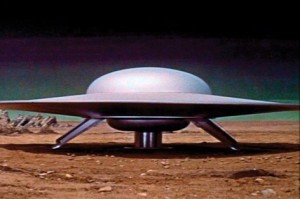What do you do when predictions fail?

In the 1950s a Chicago housewife named Dorothy Martin predicted the end of the world to occur in the dawn hours of December 21, 1954. She said she had been receiving messages from Sanada of the planet Clarion that a world flood event would wipe out humanity. Yet at midnight just hours before the devastating flood, a flying saucer from the planet Clarion would arrive near midnight and take them to safety and a new life in outer space.
She had quite a following. Some stayed home and fretted through the night wondering what would happen, but her closest believers, having sold their homes, quit their jobs and left their spouses, held vigil with her in her living room throughout the night. As midnight came and went with no rescue from a flying saucer, the group became increasingly agitated and despondent. After all, the cataclysmic flood was coming and still there was still no rescue. Near four o’clock in the morning, Dorothy received another message from the planet Clarion: There would be no flood. The God of Earth has decided to spare them.
Here’s the interesting thing – prior to the morning of December 21, 1954, their small cult remained in self-isolation. They made no outside contact, nor attempted to convert anyone to their beliefs, and remained suspicious of those who inquired about the end of the world. Yet when the cataclysm came and went without incident, they then called the newspapers and immediately worked to spread the word that earth had been spared, and worked to convert many new believers to their mission.
Leon Festinger, a psychologist, imbedded himself and in the group and relates the story in his book When Prophecy Fails. He describes a few conditions that contribute to continued ardent belief in the face of failed predictions:
- The belief must be correlated with a behavior or action (selling one’s life possessions)
- The behavior must be difficult to undo (selling one’s life possessions)
- The belief must have a specific event associated with it (end of world Dec 21, 1954)
- The believer must have a social network to support continued belief in the face of failed prediction (they actively recruited new members immediately after the spaceship did not appear)
Here’s my question – what kinds of more sane predictions and associated behaviors do we hold on to in the face of repeated failure?
Incidentally, Dorothy Martin’s own husband, a non-believer, went to bed early and slept soundly through the night.



